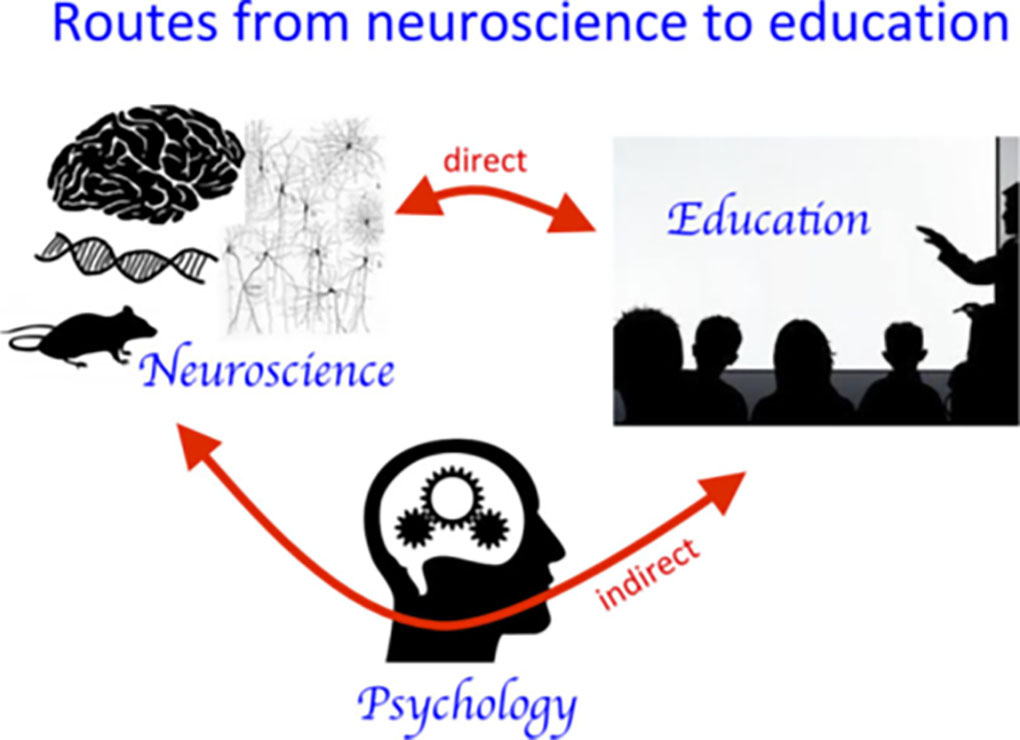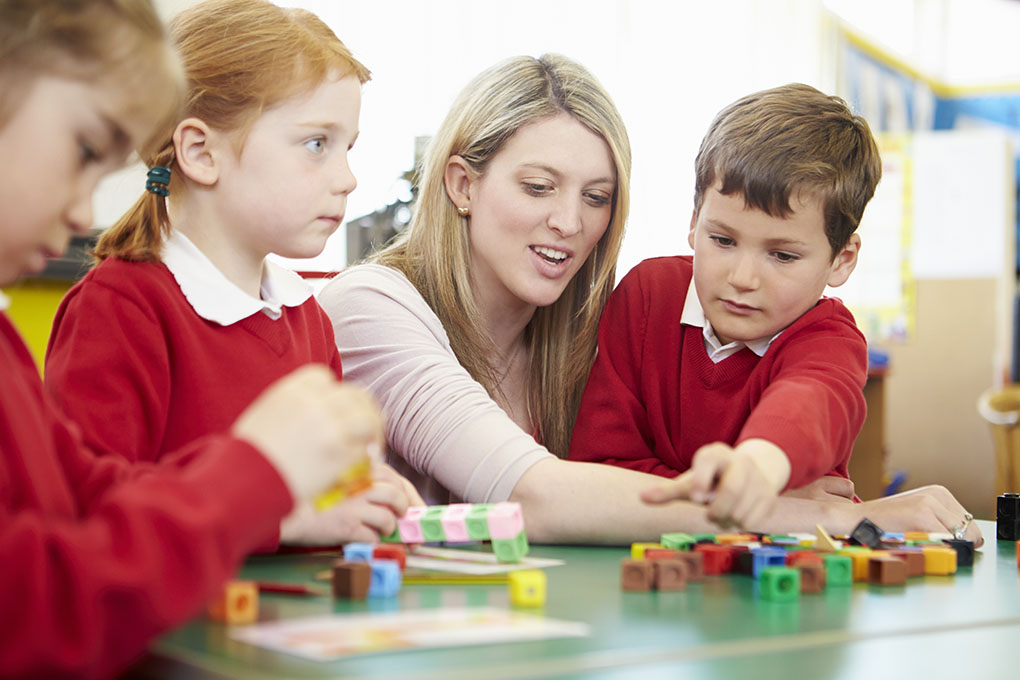Earlier this year, Professor Michael Thomas and colleagues compiled an Annual Research Review for the Journal of Child Psychology and Psychiatry, highlighting the contributions that neuroscience can make to understanding learning and classroom teaching. Here, we summarise their main findings, the current challenges to the field and the future of educational neuroscience.
Educational neuroscience is based on the principle that understanding the neural mechanisms underlying learning may inform classroom teaching practice and policy. Since its inception in the 1990s, however, the concept of educational neuroscience has been the subject of heated debate. While teachers generally seem enthusiastic about the links between the brain and learning mechanisms, understanding does not always align with the science (so-called ‘neuromyths’). For example, numerous companies now sell ‘brain training’ materials that use neuroscience merely as window-dressing. In addition, some in the education and psychology fields are resistant to such an inter-disciplinary approach to understanding learning, seeing neuroscience as reductionist or too remote from the classroom.
In rebuttal to this debate, Thomas et al. propose that a purely psychological approach to education that ignores neuroscience poses a risk to educational practice and learning development. Critically, psychology continues to use theoretical concepts that are at odds with how the brain works. “The brain seems to use specific circuits to support the content of learning, and so when one trains on one task, there is little transfer to very different tasks;1 additional training on transfer activities (so-called meta-cognitive skills) is needed to apply skills to new situations”, explains Thomas. “Psychology, by contrast, continues to use theoretical ideas involving general-purpose computing devices (‘working memory’, ‘attention’) and hypothesises that training on certain skills will produce very general benefits”. This latter concept, however, has not been sufficiently supported by empirical evidence.1
The key message presented by Thomas and colleagues in their review, is that neuroscience can in fact interact with education in two main ways: either through psychology — where an understanding of brain mechanisms helps to improve psychological theories of learning — or directly, through conceptions of brain health (Figure 1). In terms of this direct route, they rationalise that although the brain supports the mind, it is also a biological organ with certain metabolic needs (e.g. nutrition, energy supply) and vulnerabilities (e.g. to stress, lack of sleep, environmental pollution).

Figure 1: Two pathways linking neuroscience to education. Reproduced with permission from the authors of Thomas, M.S.C. et al. (2019), Annual Research Review: Educational neuroscience: progress and prospects. J Child Psychol. Psychiatr. 60: 477-492. doi:10.1111/jcpp.12973
This direct pathway between neuroscience and education revolves around putting the child in the classroom in the best position to learn. To do so, Thomas et al. explain that educational outcomes need to be thought of in terms of the nested constraints that encompass the individual, the classroom and the school, as well as the family environment and society. Interestingly, the researchers discuss that based on current data,2 home conditions seem to be more powerful in influencing educational outcomes than what happens in school. This finding suggests that school practices are not always the limiting factor on performance.
The field of educational neuroscience is still somewhat in its infancy, and much more work remains to be done to make evidence-informed decisions about educational practices. “Although learning seems like a simple idea, it is very complex from the point of view of the brain: it involves the interplay of perhaps eight different neural systems”, says Thomas. “Understanding what optimises learning through this interplay (for example, via concepts such as spaced learning and retrieval learning) is a huge challenge”. In this regard, organisations such as the Educational Endowment Foundation3 are helping the field to take steps forward. This foundation supports randomised controlled trials (RCTs) of new educational techniques, which with time, are expected to produce an expanding knowledge base of what works and encourage evidence-informed approaches to educational policy making.
Thomas et al. themselves are conducting such RCTs at the Centre for Educational Neuroscience4, University of London. “We are currently conducting a large-scale RCT to evaluate a new learning activity for maths and science in primary age children, known as UnLocke5”, says Thomas. “This computer-based activity is based on two neuroscientific insights: (1) that to learn new maths and science concepts, children frequently have to over-ride their previous learning or intuitive knowledge (e.g., learning that -5 is less than -4, having previously learnt that 5 is more than 4; learning that the world is round despite years of experience of playing football on apparently flat playing fields); (2) that this ‘overriding skill’, called inhibitory control,6 can be improved with training, so long as the skill is practiced in the context of the material where it is needed, in this case, counter-intuitive concepts in the age-appropriate maths and science syllabus”. The results of the UnLocke study are anticipated shortly.
A critical challenge to overcome in the field now, is to translate neuroscientific findings into useful educational practices. “The field of psychology offers a salutary lesson — despite 125 years of research on learning and memory, there are still practices carried out in the classroom that (with the support of solid empirical evidence) are clearly ineffective;7 conversely, effective practices have not yet found their way into the classroom”, explains Thomas. “Translation needs to be supported by organisational structures that bring together educational practitioners and researchers; medicine offers a good example about how this can be done”.

To address this challenge, the researchers hope that the next decade will have a greater focus on the neuroscience of teaching, including the processes underlying teaching skills, and the explicit knowledge teachers need about neuroscience that will help them with their practice. “We also need a greater focus on understanding sources of individual differences in learning ability, be they genetic or environmental (such as socioeconomic status), and then alter teaching to optimise learning for the individual child”, says Thomas. “To ensure advances in these areas, teachers themselves will need to become more involved in driving the neuroscience research agenda”.
Overall, it is clear that educational neuroscience must be a dialogue that is as much about teachers stimulating research directions and thinking about how new findings may be useful in the classroom as it is about researchers communicating the findings of their cognitive neuroscience studies. “If the example of public health is anything to go by, it may be that large improvements in educational outcomes are possible, but only by combining many small effects, such as sleep, nutrition, stress reduction, optimising engagement, etc.”, says Thomas. “The pressing agenda for educational neuroscience over the next decade is to establish the evidence base in all of these areas”.
Referring to: Thomas, M.S.C., Ansari, D. and Knowland, V.C.P. (2019), Annual Research Review: Educational neuroscience: progress and prospects. J Child Psychol. Psychiatr. 60: 477-492. doi: 10.1111/jcpp.12973
Key points
- Interdisciplinary research is the best way to improve learning outcomes in the classroom.
- Teachers understanding learning and the implications it has for their teaching should form the basis of their teaching practice.
- The field of educational neuroscience is intrinsically translational and one of its goals is to engage with policy makers.
- Researchers must not overstate the current state of the basic science and the maturity of translation.
- Simultaneously, researchers should not understate the importance of the science of learning in supporting an evidence-informed approach to policymaking in education.
Further reading
1Sala, G. et al. (2017), Does far transfer exist? Negative evidence from chess, music, and working memory training. Curr. Dir. Psychol. Sci. 26: 515-520. doi:10.1177/0963721417712760
2Neville, H.J. et al. (2013), Family-based training program improves brain function, cognition, and behavior in lower socioeconomic status preschoolers. PNAS. 110:12138-12143. doi: 10.1073/pnas.1304437110
3https://educationendowmentfoundation.org.uk/
4http://www.educationalneuroscience.org.uk/
6Mareschal, D. (2016). The neuroscience of conceptual learning in science and mathematics. Current Opinion in Behavioural Sciences, 10, 14-18. doi:10.1016/j.cobeha.2016.06.001
7Roediger, H.L. (2013), Applying cognitive psychology to education: Translational educational science. Psychol. Sci. Public Interest 14:1-3. doi:10.1177/1529100612454415
Glossary
Spaced learning: a learning technique whereby information is repeated multiple times, in short bursts of 15-20 minutes each. Each training session is separated by a 10 minute interval during which the learners do a different task, usually comprising physical activity.
Retrieval learning: formally known as “the testing effect”, retrieval practice involves frequent tests or quizzes to bring learnt information out of the memory and into the mind.
Inhibitory control: a cognitive process whereby impulses and habitual or dominant responses are inhibited in order to focus attention on a new task with new goals or requirements.
A pdf version of this article is available to download from the sidebar.
